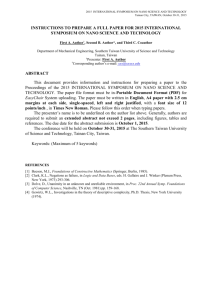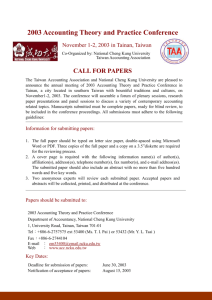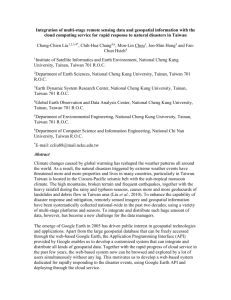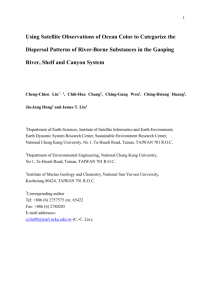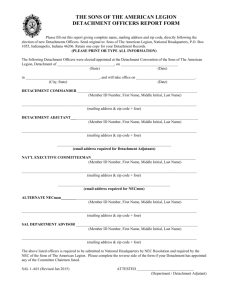Sedimentary and structural features in southwest Taiwan orogen
advertisement
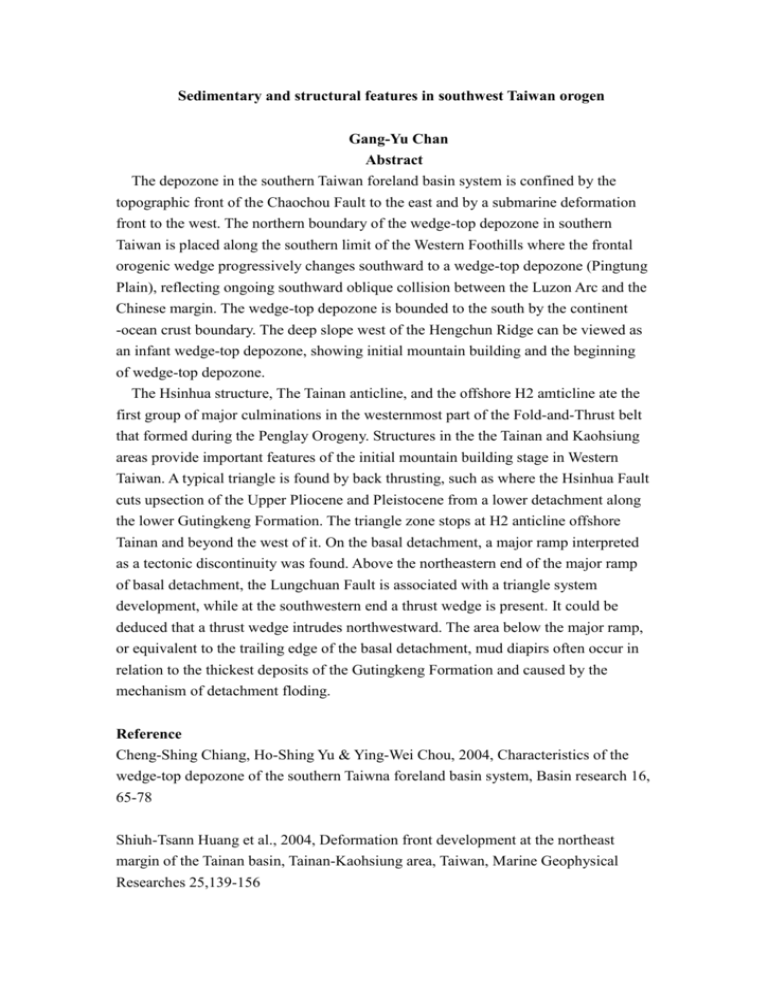
Sedimentary and structural features in southwest Taiwan orogen Gang-Yu Chan Abstract The depozone in the southern Taiwan foreland basin system is confined by the topographic front of the Chaochou Fault to the east and by a submarine deformation front to the west. The northern boundary of the wedge-top depozone in southern Taiwan is placed along the southern limit of the Western Foothills where the frontal orogenic wedge progressively changes southward to a wedge-top depozone (Pingtung Plain), reflecting ongoing southward oblique collision between the Luzon Arc and the Chinese margin. The wedge-top depozone is bounded to the south by the continent -ocean crust boundary. The deep slope west of the Hengchun Ridge can be viewed as an infant wedge-top depozone, showing initial mountain building and the beginning of wedge-top depozone. The Hsinhua structure, The Tainan anticline, and the offshore H2 amticline ate the first group of major culminations in the westernmost part of the Fold-and-Thrust belt that formed during the Penglay Orogeny. Structures in the the Tainan and Kaohsiung areas provide important features of the initial mountain building stage in Western Taiwan. A typical triangle is found by back thrusting, such as where the Hsinhua Fault cuts upsection of the Upper Pliocene and Pleistocene from a lower detachment along the lower Gutingkeng Formation. The triangle zone stops at H2 anticline offshore Tainan and beyond the west of it. On the basal detachment, a major ramp interpreted as a tectonic discontinuity was found. Above the northeastern end of the major ramp of basal detachment, the Lungchuan Fault is associated with a triangle system development, while at the southwestern end a thrust wedge is present. It could be deduced that a thrust wedge intrudes northwestward. The area below the major ramp, or equivalent to the trailing edge of the basal detachment, mud diapirs often occur in relation to the thickest deposits of the Gutingkeng Formation and caused by the mechanism of detachment floding. Reference Cheng-Shing Chiang, Ho-Shing Yu & Ying-Wei Chou, 2004, Characteristics of the wedge-top depozone of the southern Taiwna foreland basin system, Basin research 16, 65-78 Shiuh-Tsann Huang et al., 2004, Deformation front development at the northeast margin of the Tainan basin, Tainan-Kaohsiung area, Taiwan, Marine Geophysical Researches 25,139-156

